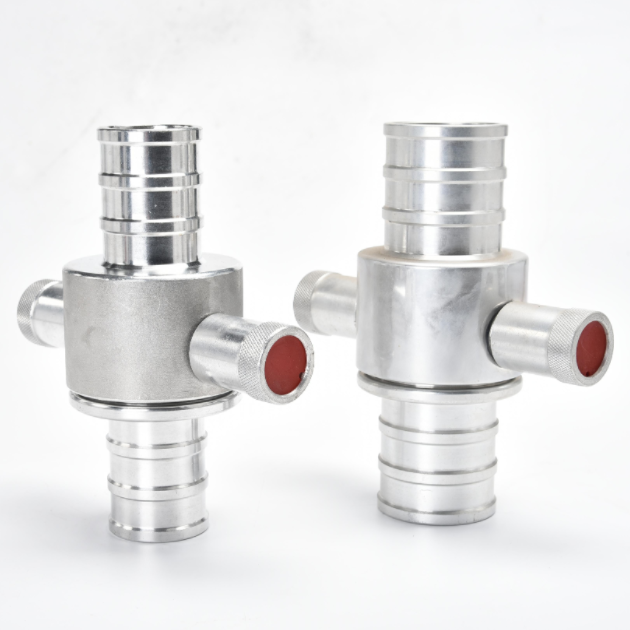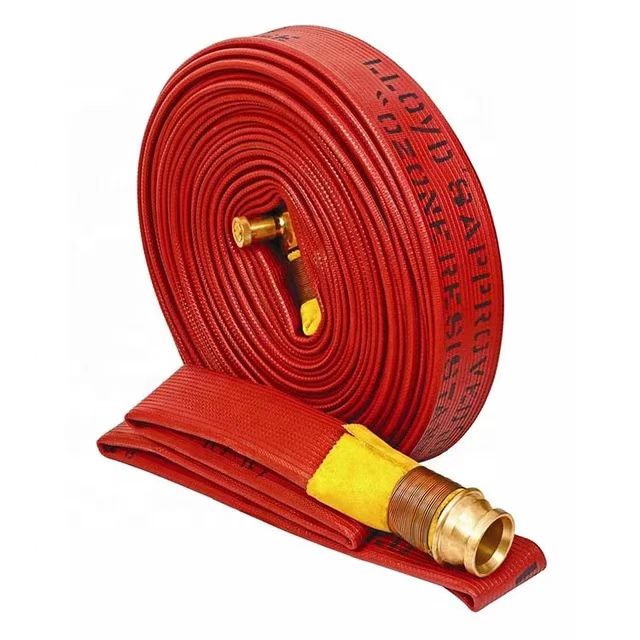Introduction:
In the dynamic landscape of firefighting, the adaptability of equipment plays a pivotal role in ensuring an effective response to diverse fire scenarios. Among the advancements in firefighting technology, multifunctional nozzles have emerged as crucial components, designed to address the complexities presented by different types of fires. This article delves into the intricacies of multifunctional fire nozzles, exploring their adaptive features and how they contribute to enhanced firefighting capabilities in a wide range of fire incidents.
Understanding Multifunctional Nozzles:
Multifunctional fire nozzles represent a significant evolution from traditional firefighting equipment, offering versatility and adaptability to respond to various fire scenarios. These nozzles are designed with features that allow firefighters to adjust water flow, spray patterns, and pressure levels, providing a tailored response to different types of fires. The adaptability of multifunctional fire nozzles lies in their ability to accommodate the unique challenges posed by diverse fire scenarios.
Adjustable Flow Rates:
Multifunctional fire nozzles are equipped with adjustable flow rates, allowing firefighters to regulate the amount of water expelled. This adaptability is crucial in situations where controlling water consumption is essential, such as in confined spaces or when addressing smaller fires to prevent unnecessary water damage.
Variable Spray Patterns:
The ability to change spray patterns is a key feature of multifunctional nozzles. Firefighters can select from a range of patterns, including solid streams, wide sprays, or fog patterns. This adaptability is particularly valuable when dealing with different fire intensities, as it enables responders to optimize water distribution based on the nature of the fire.
Pressure Adjustment Capabilities:
Multifunctional fire nozzles allow for real-time adjustment of water pressure. This adaptability is essential in scenarios where high-pressure streams are required to penetrate dense materials, such as wood or fabrics, or lower pressure is needed to prevent further damage in delicate environments.
Adaptation to Specific Fire Scenarios:
Structural Fires:
In the context of structural fires, multifunctional nozzles excel in adapting to the challenges posed by varying building designs and materials. Adjustable flow rates and spray patterns enable firefighters to effectively navigate confined spaces, reach elevated areas, and penetrate different structural elements.
Wildfires:
The adaptability of multifunctional fire nozzles is crucial in combating wildfires where the terrain and fire behavior are unpredictable. The ability to adjust spray patterns allows for creating firebreaks, and pressure control is instrumental in reaching flames in challenging topographies.
Chemical and Hazardous Material Fires:
Multifunctional fire nozzles are designed to handle hazardous material fires by allowing responders to customize water applications. The ability to adjust flow rates and pressure ensures that the response is tailored to the specific properties of the materials involved, preventing further chemical reactions or the spreading of contaminants.
Vehicle Fires:
When dealing with vehicle fires, multifunctional nozzles provide adaptability in terms of reaching different parts of the vehicle. Variable spray patterns are particularly useful in efficiently extinguishing flames in various sections of a vehicle, from the engine compartment to the interior.
Rescue Operations:
Multifunctional fire nozzles contribute to rescue operations by adapting to the specific needs of the situation. Whether it involves cooling surfaces for safe entry, creating a barrier to shield responders from heat, or providing a water curtain for protection, the adaptability of these nozzles is invaluable in dynamic rescue scenarios.
Technological Innovations Enhancing Adaptability:
Smart Nozzle Technology:
Advancements in smart nozzle technology have introduced features such as real-time data monitoring and communication capabilities. Smart multifunctional nozzles can adjust settings automatically based on environmental conditions, optimizing their adaptability in real time.
Integration with Firefighting Drones:
Multifunctional fire nozzles are now being integrated with firefighting drones, expanding their adaptability. Drones equipped with these nozzles can access hard-to-reach areas, providing aerial firefighting capabilities and adapting to scenarios where traditional methods may be challenging.
Maintenance and Training Considerations:
Regular Maintenance Protocols:
Ensuring the ongoing adaptability of multifunctional nozzles requires adherence to regular maintenance protocols. Routine checks should include verifying the functionality of adjustable features, inspecting for wear or damage, and ensuring proper calibration.
Training for Optimal Utilization:
Firefighters must undergo comprehensive training to fully capitalize on the adaptability offered by multifunctional fire nozzles. Training programs should cover the intricacies of adjusting flow rates, spray patterns, and pressure levels based on the unique demands of different fire scenarios.
Addressing Specialized Fire Scenarios:
Oil and Gas Fires:
Multifunctional nozzles are adept at handling oil and gas fires, where the intensity and characteristics differ significantly from conventional fires. Adjustable flow rates and pressure levels are crucial in delivering an effective firefighting response in these specialized scenarios.
Electrical Fires:
Fires involving electrical equipment demand a unique approach, and multifunctional fire nozzles provide adaptability by allowing firefighters to tailor their response to the specific hazards posed by electrical fires. Lower pressure settings can be employed to mitigate the risk of electrical shock while effectively suppressing the fire.
High-Rise Fires:
Multifunctional fire nozzles are essential in high-rise firefighting scenarios where reaching the upper floors and controlling water distribution pose challenges. Their adaptability in terms of adjustable flow rates and spray patterns enables efficient firefighting in tall structures, optimizing water usage and effectiveness.
Combustible Metal Fires:
The adaptability of multifunctional nozzles is crucial when facing fires involving combustible metals, which require specialized suppression techniques. These nozzles allow for precise control of water application to manage the unique challenges presented by metal fires.
Conclusion:
The adaptability of multifunctional fire nozzles stands as a cornerstone of modern firefighting strategies. From structural fires to wildfires and hazardous material incidents, these nozzles empower firefighters with the flexibility to tailor their response to the intricacies of each situation. As technological innovations continue to enhance their capabilities, the role of multifunctional nozzles in firefighting is poised to become even more integral, ensuring that responders are equipped to meet the evolving challenges of diverse fire scenarios.




